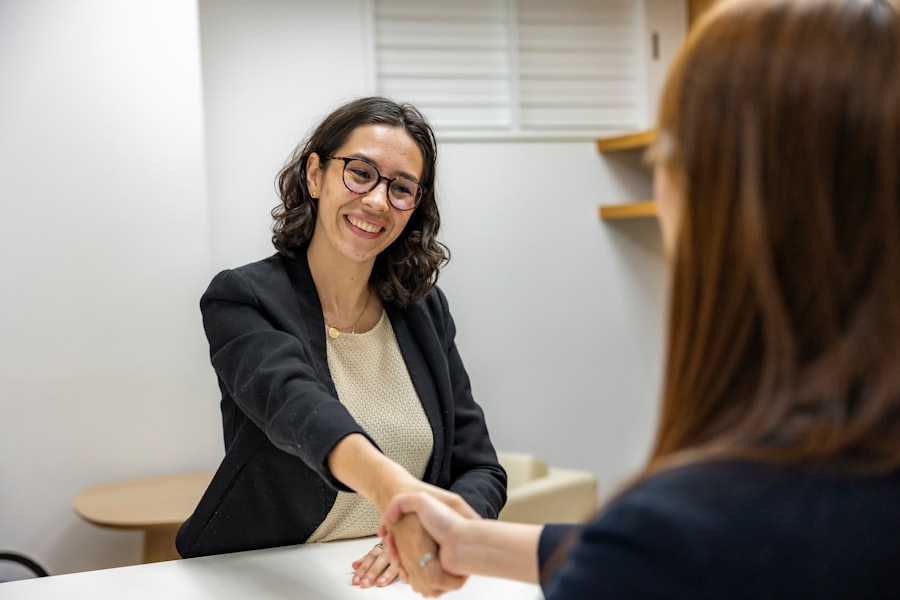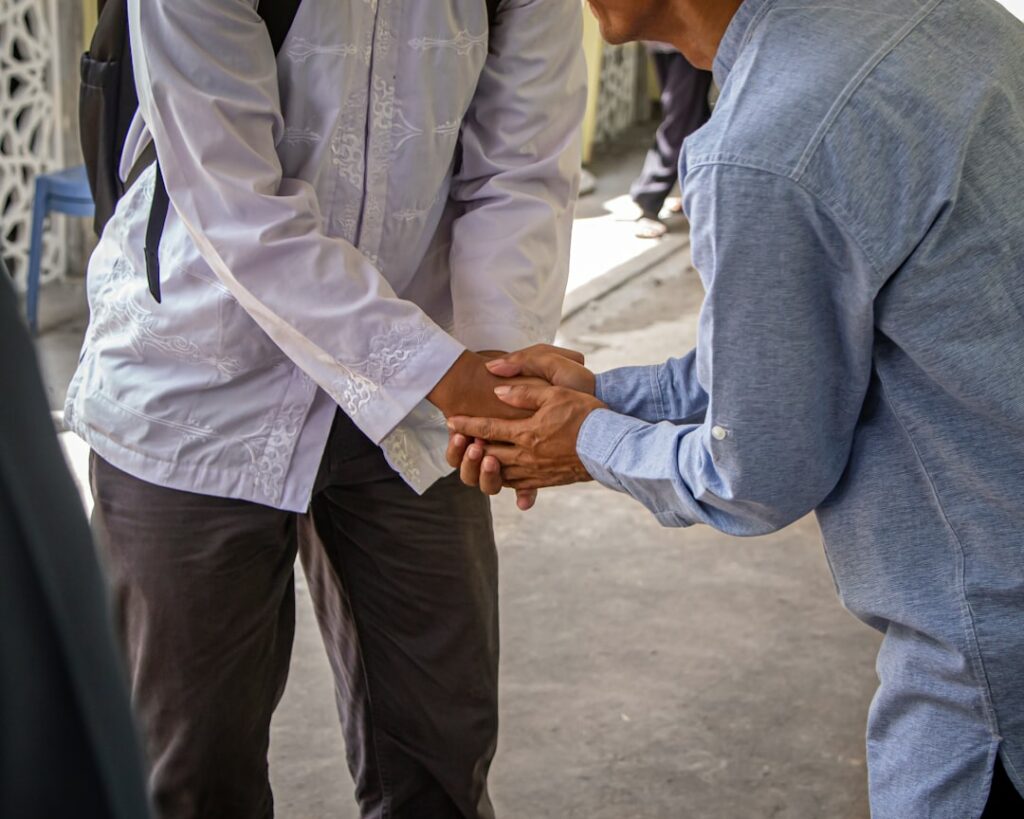In our daily interactions, we often underestimate the profound impact that symbolic gestures can have on communication. These gestures, whether subtle or overt, serve as a bridge between words and emotions, allowing us to convey messages that might otherwise remain unspoken. When I stand before couples on their wedding day, I witness firsthand how a simple handhold or a shared glance can encapsulate a world of meaning.
These gestures transcend language barriers, enabling individuals to connect on a deeper level, fostering understanding and empathy. Symbolic gestures are not merely embellishments to our conversations; they are integral to the way we express ourselves. A nod of agreement, a warm embrace, or even a raised eyebrow can communicate volumes about our feelings and intentions.
In a society where verbal communication often dominates, it is essential to recognize the power of these nonverbal cues. They enrich our interactions, adding layers of nuance that words alone may fail to convey. As I guide couples through their vows, I encourage them to embrace these gestures, for they are the silent affirmations of love and commitment that resonate far beyond the spoken word.
The Psychological Impact of Symbolic Gestures
The Power of Symbolic Gestures
The psychological implications of symbolic gestures are profound and far-reaching. Research has shown that these gestures can significantly influence our emotional states and perceptions of others. When I observe couples exchanging rings during their wedding ceremony, I am reminded of the deep psychological significance behind this act.
Symbolism and Emotional Connection
The ring, a circular symbol with no beginning or end, represents eternal love and commitment. This simple gesture can evoke feelings of joy, security, and belonging, reinforcing the bond between partners. Moreover, symbolic gestures can serve as powerful tools for self-expression and identity formation.
Asserting Values and Identity
In my experience as a celebrant, I have seen how individuals use gestures to assert their values and beliefs during significant life events. For instance, lighting a unity candle during a wedding ceremony symbolizes the merging of two lives into one. This act not only signifies the couple’s commitment but also reflects their shared values and aspirations.
Harnessing the Power of Symbolic Gestures
By understanding the psychological impact of these gestures, we can harness their power to enhance our relationships and foster a sense of community.
How Symbolic Gestures Can Enhance Emotional Expression

Emotional expression is an essential aspect of human connection, and symbolic gestures play a crucial role in this process. When words fail to capture the depth of our feelings, gestures can step in to fill the void. I often encourage couples to incorporate personal gestures into their wedding ceremonies—whether it’s a special dance, a shared laugh, or even a moment of silence—to express their unique love story.
These gestures allow them to communicate their emotions authentically, creating a memorable experience for themselves and their guests. Furthermore, symbolic gestures can facilitate emotional healing and reconciliation. In moments of conflict or misunderstanding, a simple gesture—a touch on the shoulder or an outstretched hand—can convey empathy and understanding.
I have witnessed couples navigate challenging moments during their ceremonies by leaning into each other’s presence, using their body language to express support and love. These gestures remind us that even in difficult times, we can find solace in one another’s company, reinforcing the emotional bonds that hold us together.
Using Symbolic Gestures for Cultural and Social Connection
Symbolic gestures are deeply rooted in cultural traditions and social practices, serving as vital connectors within communities. In Scotland, for instance, the act of handfasting—a traditional wedding custom—symbolizes the binding of two lives together through the tying of knots. As I perform this ritual for couples, I am acutely aware of its cultural significance and the sense of belonging it fosters within their families and communities.
These gestures not only honor heritage but also create a shared experience that strengthens social ties. Moreover, symbolic gestures can transcend cultural boundaries, fostering connections among diverse groups. In my role as a celebrant, I have had the privilege of officiating weddings that blend various cultural traditions.
Each couple brings their unique customs into the ceremony—whether it’s incorporating elements from their respective backgrounds or creating new rituals altogether. These symbolic gestures serve as a celebration of diversity while reinforcing the idea that love knows no boundaries. By embracing these practices, we cultivate a sense of unity and understanding in an increasingly interconnected world.
Symbolic Gestures in Rituals and Ceremonies
Rituals and ceremonies are rich with symbolic gestures that imbue them with meaning and significance. From weddings to graduations, these events often rely on carefully crafted gestures to convey emotions and intentions. During wedding ceremonies, for example, the exchange of vows is accompanied by various symbolic acts—lighting candles, pouring sand, or even planting a tree—that represent the couple’s commitment to one another.
As I guide couples through these rituals, I emphasize the importance of being present in these moments, allowing the symbolism to resonate deeply within them. In addition to personal milestones, symbolic gestures also play a vital role in communal rituals. Festivals, religious ceremonies, and cultural celebrations often incorporate gestures that reflect shared values and beliefs.
For instance, during Hogmanay celebrations in Scotland, the act of first-footing—being the first person to enter a home after midnight—carries significant symbolism related to luck and prosperity for the coming year. These collective gestures foster a sense of belonging and reinforce community bonds, reminding us that we are part of something greater than ourselves.
The Power of Symbolic Gestures in Nonverbal Communication

Nonverbal communication is an essential aspect of human interaction, and symbolic gestures are at its core. They convey emotions and intentions without the need for words, allowing us to connect with others on a profound level. As I stand before couples on their wedding day, I often remind them that their body language speaks volumes about their feelings for one another.
A gentle touch or an affectionate gaze can communicate love and devotion far more effectively than any eloquent speech. Moreover, symbolic gestures can enhance our ability to empathize with others. When we witness someone expressing joy or sorrow through their gestures—be it through laughter or tears—we are often moved to respond in kind.
This shared emotional experience fosters connection and understanding among individuals. In my work as a celebrant, I strive to create an atmosphere where couples feel comfortable expressing themselves through both words and gestures, allowing their love story to unfold authentically before their loved ones.
Incorporating Symbolic Gestures in Therapeutic Practices
The therapeutic potential of symbolic gestures is increasingly recognized in various fields of psychology and counseling. These gestures can serve as powerful tools for self-exploration and healing. In my experience working with couples preparing for marriage, I often encourage them to engage in exercises that involve symbolic gestures—such as writing letters to each other or creating vision boards—to express their hopes and dreams for their future together.
These activities not only facilitate communication but also promote emotional intimacy. Additionally, symbolic gestures can be instrumental in grief counseling and trauma recovery. When individuals struggle to articulate their feelings verbally, engaging in symbolic acts—such as lighting a candle in memory of a loved one or creating a memory box—can provide an outlet for expression.
These gestures allow individuals to honor their emotions while fostering a sense of connection with others who may be experiencing similar challenges. By incorporating symbolic gestures into therapeutic practices, we can create safe spaces for healing and growth.
Harnessing the Power of Symbolic Gestures in Personal Development
In our journey toward personal development, symbolic gestures can serve as powerful catalysts for change. By consciously incorporating meaningful gestures into our daily lives, we can reinforce our intentions and aspirations. For instance, when I encourage couples to create rituals around anniversaries or significant milestones—such as writing letters to each other or revisiting places that hold special memories—they are engaging in symbolic acts that strengthen their bond over time.
Moreover, symbolic gestures can help us cultivate mindfulness and self-awareness. By being intentional about our actions—whether it’s practicing gratitude through small acts of kindness or setting aside time for reflection—we can create meaningful connections with ourselves and others. As I guide couples through their wedding ceremonies, I emphasize the importance of being present in each moment, allowing them to fully embrace the significance of their vows and commitments.
In doing so, they harness the power of symbolic gestures not only in their relationship but also in their personal growth journey. In conclusion, symbolic gestures are an integral part of human communication that enrich our interactions and deepen our connections with others. From enhancing emotional expression to fostering cultural ties and personal development, these gestures hold immense power in shaping our experiences.
As we navigate life’s milestones—be it weddings or moments of reflection—we must embrace the beauty of these symbols and allow them to guide us toward greater understanding and connection with ourselves and those around us.
If you’re interested in incorporating symbolic gestures into your wedding ceremony, you might find the article “Creating Your Perfect Humanist Wedding Ceremony: A Step-by-Step Guide” particularly useful. This guide provides detailed insights on how to personalize your ceremony, including the integration of meaningful symbols and rituals that reflect your values and relationship. For more information on how to make your special day uniquely yours with symbolic gestures, check out the full article here.
FAQs
What are symbolic gestures?
Symbolic gestures are non-verbal communication methods that convey a specific meaning or message. These gestures can vary across different cultures and may include hand movements, facial expressions, or body language.
What is the purpose of symbolic gestures?
The purpose of symbolic gestures is to convey a message or meaning without using words. They can be used to express emotions, convey information, or communicate non-verbally in various social or cultural contexts.
How are symbolic gestures used in different cultures?
Symbolic gestures can vary widely across different cultures and may have different meanings or interpretations. It is important to be aware of cultural differences and norms when using or interpreting symbolic gestures in a cross-cultural context.
What are some examples of symbolic gestures?
Examples of symbolic gestures include nodding the head to indicate agreement, shaking the head to indicate disagreement, giving a thumbs-up to signal approval, or placing a hand over the heart to express sincerity or gratitude.
Can symbolic gestures be misinterpreted?
Yes, symbolic gestures can be misinterpreted if the meaning or cultural context is not understood. It is important to be mindful of cultural differences and to consider the potential for misinterpretation when using symbolic gestures in communication.

